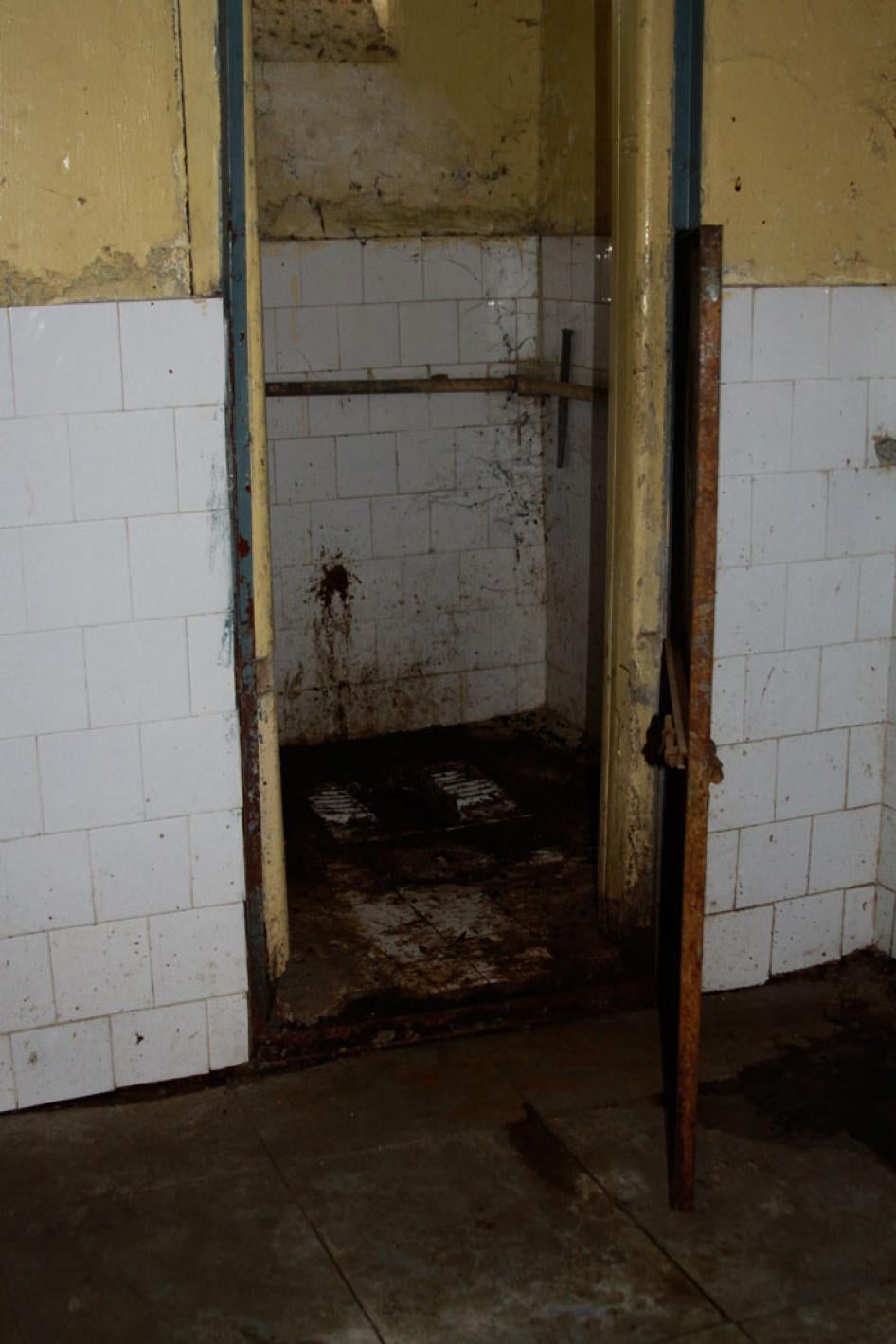In India, many women and girls with intellectual and psychosocial disabilities are locked up in institutions against their will. Some of the institutions for those women, who have disabilities ranging from Down Syndrome and cerebral palsy to schizophrenia and depression, are filthy and overcrowded.
Residents lie on the floor practically on top of each other for lack of space. Opportunities to bathe are minimal, access to medical care is limited, and forced treatment – including electroshock therapy – is often the norm. Verbal or physical abuse by staff members is common. It’s not a pretty picture, but this is the reality for those living in institutions. Many don’t even know their diagnosis. Admitting female relatives to institutions is painfully easy, but it’s nearly impossible for these women to leave without their family’s permission.
Human Rights Watch’s Kriti Sharma spoke with Amy Braunschweiger about the 24 institutions she and other researchers visited across four Indian states – including government mental hospitals and government and private residential care facilities – for the new report, “’Treated Worse than Animals.’“ This is what they found.
What are the institutions you visited like?
Most were horrifying. We went to institutions where people complained that they were only allowed to bathe once a week, often without soap—even though they wanted to bathe every day. Dozens of women shared one towel. Everyone bathes together, a humiliating experience. Lice is so rampant that many residents are forced to shave their heads. There are countless reports of verbal and physical abuse.
One of the worst institutions we saw, Asha Kiran, a government-run residential care facility in Delhi, is for people with intellectual disabilities. Nearly 900 people were crammed into a facility designed to hold 350. Everyone slept on the floor, there was no place to walk. There were no meaningful activities or proper vocational training. The women and girls spent their days locked inside their rooms, sleeping and watching TV. Some of the staff wrote the patients off as “mentally retarded.”
These women can’t leave an institution until a family member picks them up or takes charge of them – but sometimes their families leave fake addresses and phone numbers so they can’t be traced. We met women who were institutionalized under a court order that expired years earlier, but because no family member claimed them, they weren’t permitted to leave. Besides, there are no good community health care programs linked to these hospitals that would allow women to live at home while still getting access to the support they may want.
Local groups such as Bapu Trust for Research on Mind and Discourse and Anjali: Mental Health Rights Organization have been calling for changes, including through legal reform.
How about the institutions where women and girls with psychosocial disabilities were held?
We found numerous cases of involuntary treatment. Many women said institution staff pushed pills down their throats. Force-feeding women and girls medicine-laced bananas or tea is fairly routine. Some women are physically dragged to the electroshock therapy room.
How is this allowed to happen?
The real problem is, in India people with psychosocial or intellectual disabilities have little control over their lives. Even when there is no medical emergency, decisions are typically made by a family, caregiver, or judge. So doctors and nurses don’t bother to get the consent of the patients or to explain procedures. This leads to rampant abuse.
Most mental health professionals we interviewed contended that their treatment was in the women’s “best interest” and that the women and girls weren’t in a condition to give informed consent. But that’s simply not the case. I’ve met formerly institutionalized women and girls who had asked, many times, to have a say in their treatment. The mental health professionals ignored them.
Under human rights law, people have a right to make their own decisions, and even to refuse medical treatment. It’s the government’s responsibility to support them in making an informed choice.
Outside of institutions, what type of care is there for women and girls with disabilities?
Parents of girls with intellectual disabilities have limited choices. Few schools provide meaningful education for their daughters. Some families rely on non-governmental organizations. Others start their own support groups, but as so many people need help, these groups quickly become overwhelmed.
The National Trust for Welfare of Persons with Autism, Cerebral Palsy, Mental Retardation and Multiple Disabilities provides multiple schemes and services for persons with intellectual disabilities but their scope and reach is limited. For example, while there is a considerable demand for lifelong support and shelter, there is a serious lack of the infrastructure and support arrangements.
Access to mental health care is extremely limited in India. There are only 43 state mental hospitals – clearly not enough to provide quality services for the 70 million or more people with psychosocial disabilities who may want it. For every million people, there are only 3 psychiatrists and roughly 0.5 psychologists. And only 25 percent of hospitals, clinics, and mental health professionals are in rural areas, where 75 percent of the people live.
Rural areas are in such desperate need of services that if families hear of a mental hospital 40 hours away, they’ll put their relative, alone, on a train to that city. But when they arrive, they don’t know where to go, and end up homeless – there’s a huge risk for sexual violence here – until the police pick them up and take them to the hospital.
In 1982, India’s government did create a community-based national mental health program, but it’s not effective. I visited five of these centers in Delhi. Each is supposed to be staffed by one psychiatrist, one psychologist, and a social worker. I found that the same psychiatrist staffed all five centers, and in some there were no psychologists or social workers. There are not enough people working in the field, partly because the stigma of these disabilities extends to the professionals who assist them.
People in India, especially in rural areas, associate psychosocial or intellectual disabilities with black magic or with sinning in a past life. The families feel stigma and shame, and sometimes forbid their relatives with disabilities from leaving the house. Community-based services could help educate people on the nature of these disabilities, and could ease some of the stigma.
How hard is it to institutionalize someone in India?
The law says you need two psychiatrists to say someone has a psychosocial disability and needs to be in a state institution – but this can easily be done at any mental hospital. If someone wants to abandon their family member at a residential care facility, for example a private institution, all they need to do is sign – no other documentation is required.
The process is problematic because there is really no effort to get the informed consent of the person concerned, and then they can be locked up against their will without any means of challenging it. This is no longer acceptable.
How often does forced institutionalization happen?
We interviewed 52 women who have lived or are living in an institution, and every one of them was forcibly admitted. It happened to Vidya a few years ago, when she was 35. She lived with her family in a 6th floor flat in Bombay. One night, after her husband took her two sons out for chocolate, she heard knocking on her door. She opened it to see three people dressed as government health workers. They told her they were giving vaccinations to everyone in neighborhood, and she reluctantly let them in. They injected her with what turned out to be a sedative, and the last thing she remembered was being dragged into the elevator. When she woke up, she was in a room with barbed wire over the window. She learned from another woman it was a mental hospital. It was only much later she found out that her husband signed the commitment papers. She claims he wanted her labeled “insane” to get an easy divorce without paying alimony.
Vidya spent a month locked up, until her mother discovered her whereabouts and had her
released. At home, Vidya’s husband continued to give her medications that made her groggy. Over the following weeks, he took her to a clinic and held her hand while she had “blood tests” done. She tried to question the doctor, but never got sufficient answers. After each “test” she suffered debilitating headaches, and her hands trembled so much that she couldn’t do dishes. It was only later, when her husband filed for divorce and submitted her medical file in court, that she learned the “blood tests” were electro-shock therapy. She was injected with anesthesia, and once she became unconscious they sent electric shocks through her brain without her knowledge.
What’s scary is that, if such forced treatment could happen to Vidya, an educated woman, it could happen to anyone. In some cases women in these institutions are from rural areas, aren’t fully literate and can’t read consent forms. They don’t know their rights. But Vidya asked the right questions. She tried to challenge them. Ultimately, she did get justice, as a judge ruled against her husband’s divorce claim and cleared her of the label “insane.” But it took seven years. She’s since become an activist, speaking out about her experiences and helping other women.
Why did the report focus on women as opposed to both men and women?
Men are forcibly institutionalized as well. But women face widespread discrimination in India, and the rate of sexual violence against women and girls is appalling. If a woman has an intellectual or psychosocial disability, it makes her even more vulnerable to abuse.
Women also face unique forms of neglect and abuse. Take reproductive healthcare. Many stop menstruating because of anti-psychotic medications, yet in most cases they’ll never see a gynecologist in an institution. Some women who have been living on the street may have been raped or even gang-raped, and they don’t get needed reproductive care in an institution. Also, if a woman with an intellectual disability says, “My neighbor raped me,” she may well be slapped and told not to lie. People don’t believe them.
So what should be done?
First, legal reform, including amending the Mental Health Care and Rights of Persons with Disabilities bills, to ensure that like everybody else, people with disabilities have legal capacity – the right to make their own decisions – and receive the necessary support to do so.
Institutions need better government oversight. And ultimately, the focus needs to move away from institutional care to providing access to community-based services for people with disabilities and their families. These services should include access to support for decision-making, as well as education, vocational training, and reproductive health care. And everyone needs to be educated on the rights of people with disabilities.
















